X-ray Telescopes Introduction
Creating a telescope to image and focus X-rays might seem like it should be an easy task. After all, scientists focus light all the time. In fact, lenses are all around us everyday. People wear glasses and contact lenses to correct their vision. Cameras use lenses to focus light onto a detector (like CCDs or film) to capture a picture. Telescopes like Hubble take images of objects in the cosmos.
However, X-rays are so energetic (and have such a small wavelength) that they tend to pass through most things, including mirrors. If you shot a beam of X-rays directly at a mirror, most of them would pass right through – they wouldn't even see that the mirror was there.
A traditional telescope's orientation of lenses and mirrors just won't work for X-ray astronomy. However, if an X-ray just barely glances the surface of the mirror then it will be reflected, behaving just as an optical photon would. The angles that can bounce an X-ray off a mirror like that are called "grazing incidence."
X-ray telescopes need to have mirrors that are made of material that will reflect an X-ray photon and need to be oriented such that the X-rays hit the mirror at that grazing incidence.
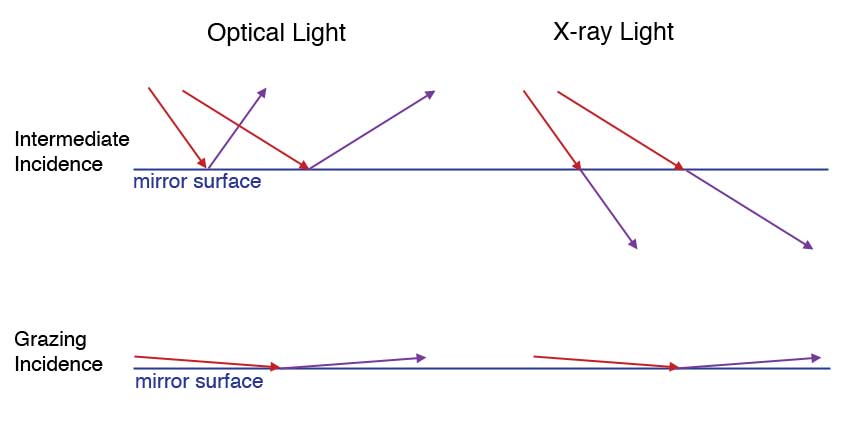
Illustration of grazing incidence. The scale in this image is exaggerated – the angle of incidence (the angle between the mirror surface and the X-ray) is actually shallower. (Credit: NASA's Imagine the Universe)
To achieve this, an X-ray telescope has to be oriented such that the mirror surfaces are nearly parallel to the incoming light.
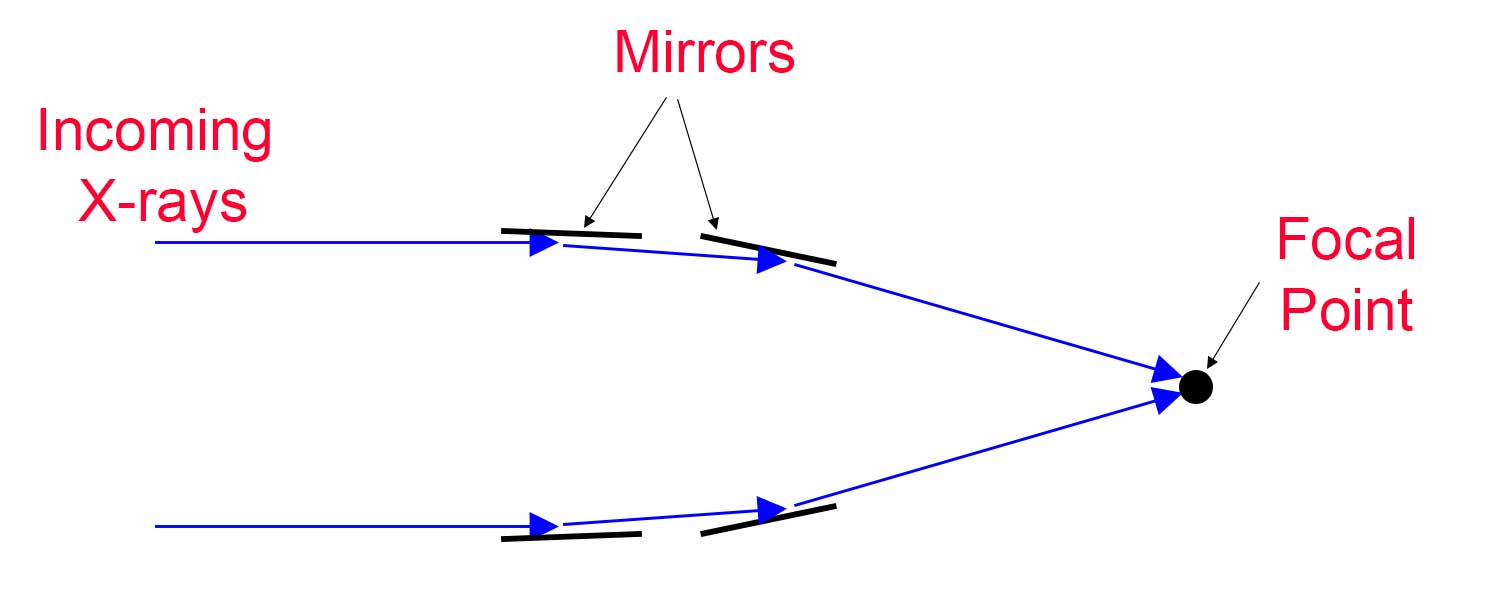
Diagram of a cut-away of an X-ray telescope with one set of mirrors. The incoming X-rays bounce off the two mirrors with a grazing incidence to be focused at the focal point. (Credit: NASA's Imagine the Universe)
By turning the mirrors on the side, however, there is a large hole in the middle of the telescope where the mirror used to be, so the telescope misses a lot of X-rays. To solve this problem, X-ray telescopes use cylindrical mirrors and nest them, one inside the other.
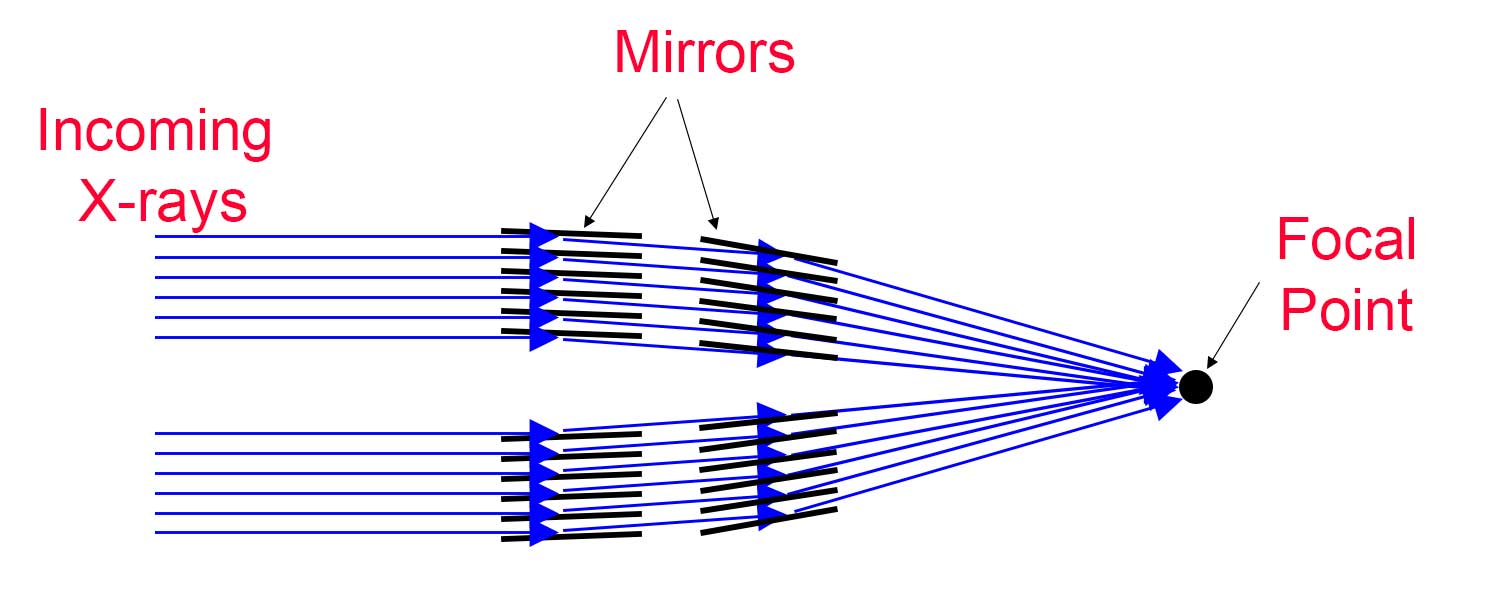
Diagram of a cut-away of an X-ray telescope with several sets of mirrors. By nesting the mirrors one within the other, more X-rays are focused, giving astronomers a brighter image. (Credit: NASA's Imagine the Universe)
In the end, a focusing X-ray telescope looks a bit like an onion, with mirrors nested one within another. The pictures below show what the mirror assembly for the XMM-Newton X-ray observatory looks like.
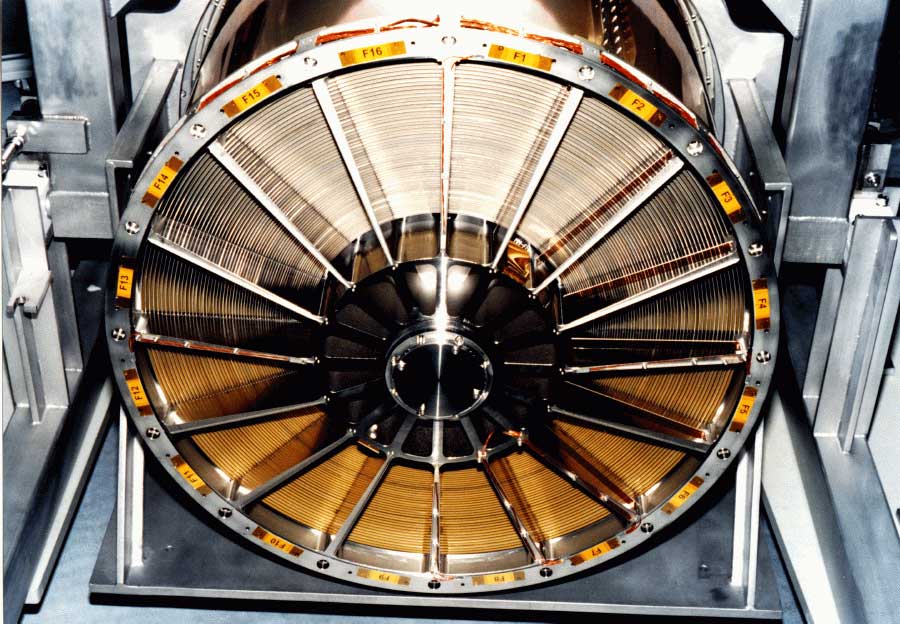
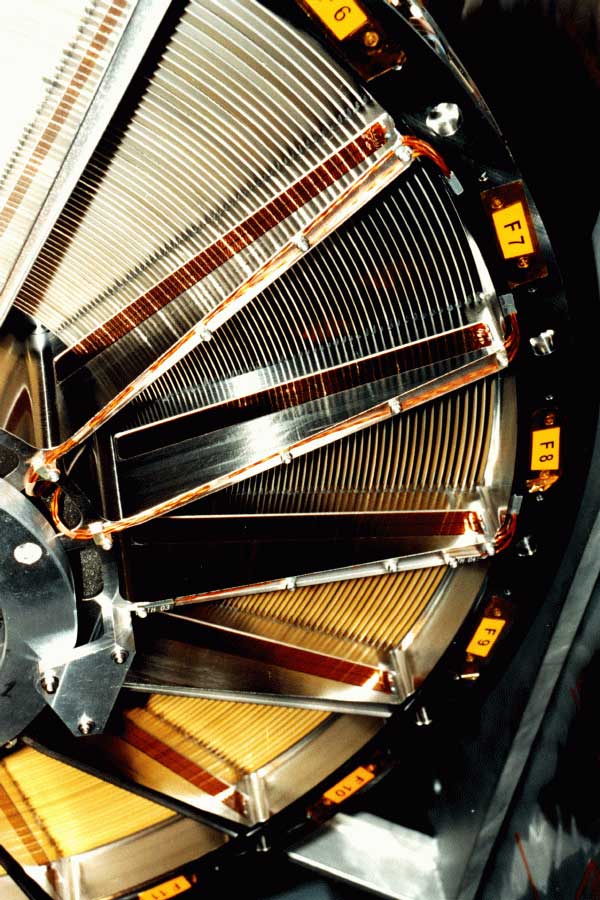
Photo of the XMM-Newton mirrors. (Credit: D. de Chambure, XMM Project (ESTEC))
Why bother to go to all the trouble to focus X-rays? Focusing helps create a clearer and shaper image of X-ray sources. It also allows scientists to get a better measure of faint X-ray sources that they could not otherwise detect. Sharp images help scientists to understand the distribution of hot gas between galaxies, the physics of supernova remnant expansion, among other things.
The ability to make an X-ray telescope moved astronomy forward in a big leap; the creation of X-ray telescopes with better spatial resolution and larger effective collection areas will continue to reveal exciting new information about the workings of our Universe.
Text updated: September 2018


